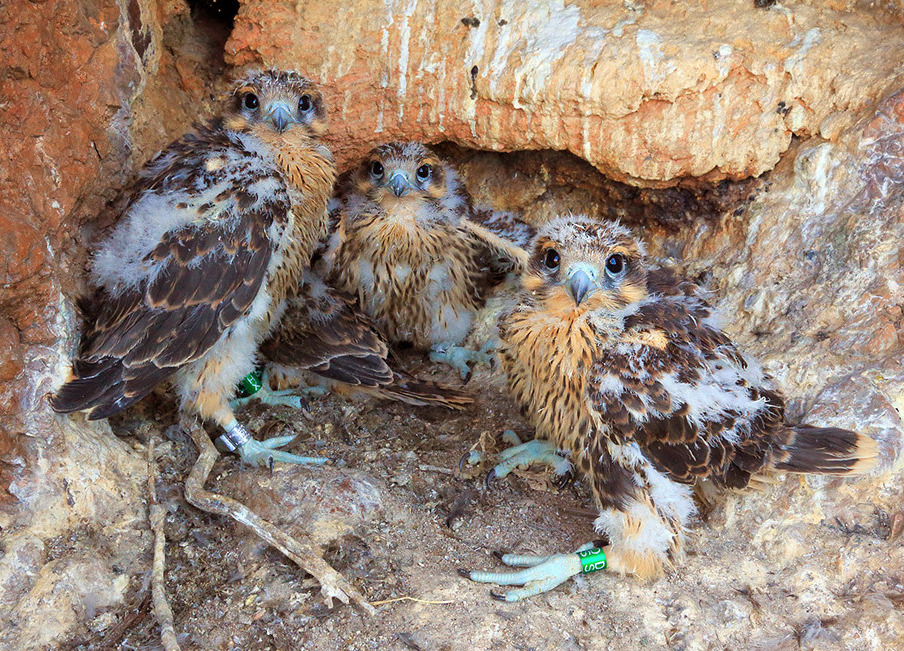
[image caption]
Tracking long-term changes in California current ocean chemistry and water masses using seabirds and stable isotopes
Using a unique dataset of over 1700 feather samples from 5 species of locally breeding seabirds between 1880 - 2005, we are using compound specific (amino acid) nitrogen isotopes to understand the long-term variation of the california current and the california undercurrent in supplying nutrients to nearshore marine food webs.
Publications:
1. Centennial Decline in the Trophic Level of an Endangered Seabird after Fisheries Decline(published 2006)
2. Scale-dependent habitat selection by a nearshore seabird, the marbled murrelet, in a highly dynamic upwelling system (published 2003)
Collaborators: Steve Beissinger and Ben Becker (UC Berkeley)

[image caption]
Marine Predator Diets, Population Dynamics and Conservation in the California Current
We work with pinnipeds and seabirds to understand population connectivity and responses to oceanographic change. Study organisms include harbor seals, northern elephant seals, pigeon guillemots, common murres, marbled murrelets, and Ashy storm petrels. Much of our work uses stable isotopes to infer short and long-term changes in diet and oceanography and state-space models to model unobserved population processes.
Publications:
- On-land pinniped classification of multiple species and demographic classes on multiple substrates using deep learning and aerial imagery (published 2025)
- Ocean-influenced estuarine habitat buffers high interannual variation in seabird reproductive success (published 2022)
- Species recovery and recolonization of past habitats: lessons for science and conservation from sea otters in estuaries (published 2019)
- Modeling coupled dynamics of an empirical predator-prey system to predict top predator recovery (published 2024)
-
Diet-Feather Stable Isotope (δ15N and δ13C) Fractionation in Common Murres and other Seabirds (published 2007)
Collaborators: UC Berkeley (Silas Gifford), National Park Service (Sarah Codde, Sarah Allen, Tori Seher), United States Geological Survey (Josh Adams, Jonathan Felis)

[image caption]
Nearshore Ecosystem Monitoring and Restoration
We collaborate with the Multi-Agency Rocky Intertidal Monitoring Network (MARINe) to understand variation in the thin band of rocky intertidal habitat along the California Coastline. Monitoring helps assess impacts of climate change, invasive species, marine heat-waves, and the overall resilience of these ecosystems to anthropogenic impacts. We also are tracking ecosystem recovery (regrowth of eelgrass-a foundational species) in a central california estuary after decades of aquaculture impacts.
Publications:
- Latitudinal variation in long-term stability of North American rocky intertidal communities (published 2021)
- Status, Trend, and Monitoring Effectiveness of Marbled Murrelet (Brachyramphus marmoratus) at Sea Abundance and Reproductive Output off Central California, 1999–2021 (published 2023)
Collaborators: UC Santa Cruz and National Park Service

[image caption]
Coastal Invasive Species Ecology and Restoration
With Lorraine Parsons and Dylan Voeller of the National Park Service, we assist investigations into the impacts and restoration potential of dune and coastal grassland habitats to impacts from invasive species and grazing.
Publications:
- Method for controlling invasive Ammophila arenaria in coastal dunes alters restoration trajectory (published 2023)
- Improved Microbial Water Quality Associated with Best Management Practices on Coastal Dairies and Livestock Grazing Operations (published 2021)
- Invasion by Ammophila arenaria alters soil chemistry, leaving lasting legacy effects on restored coastal dunes in California (published 2021)
Collaborators: Lorraine Parsons, Dylan Voeller, Ben Becker (National Park Service)

[image caption]
Long-term Population Dynamics and Ecology of Protected Species
We are using multistate occupancy models to understand the long-term population dynamics of Endangered Northern Spotted Owls (NSO) in Marin County. Throughout their range in the Pacific Northwest, NSO has suffered dramatic population declines. However, we study the southern-most population which is the only location that has not yet suffered declines due competition from the Barred Owl, a newly arrived east coast transplant. Our research is helping to understand the impacts of a small number of Barred owls on the NSO.
Similarly, we are analyzing occupancy and reproduction of Prairie Falcons at Pinnacles National Park to understand potential disturbance impacts from hikers, weather events, and an increasing peregrine falcon population.
We are also working with the National Park Service to analyze long-term time-series population data to understand the ecology, conservation needs, and population trends of endangered tidewater gobies, California Red-Legged Frogs, and Harbor Seals in the Bay Area.
Collaborators: Darren Fong (NPS); Thuy-Tien Bui (UCSB); Danielle Lavitt, Robin Hinks & Mark Sun (UC Berkeley)’ Sarah Codde & Sarah Allen (NPS)
Collaborators: Point Blue Conservation Science (Renee Cormier), National Park Service (Gavin Emmons, David Press, Taylor Ellis), and UC Berkeley (CeeCee Chen and Noor Wahle)

